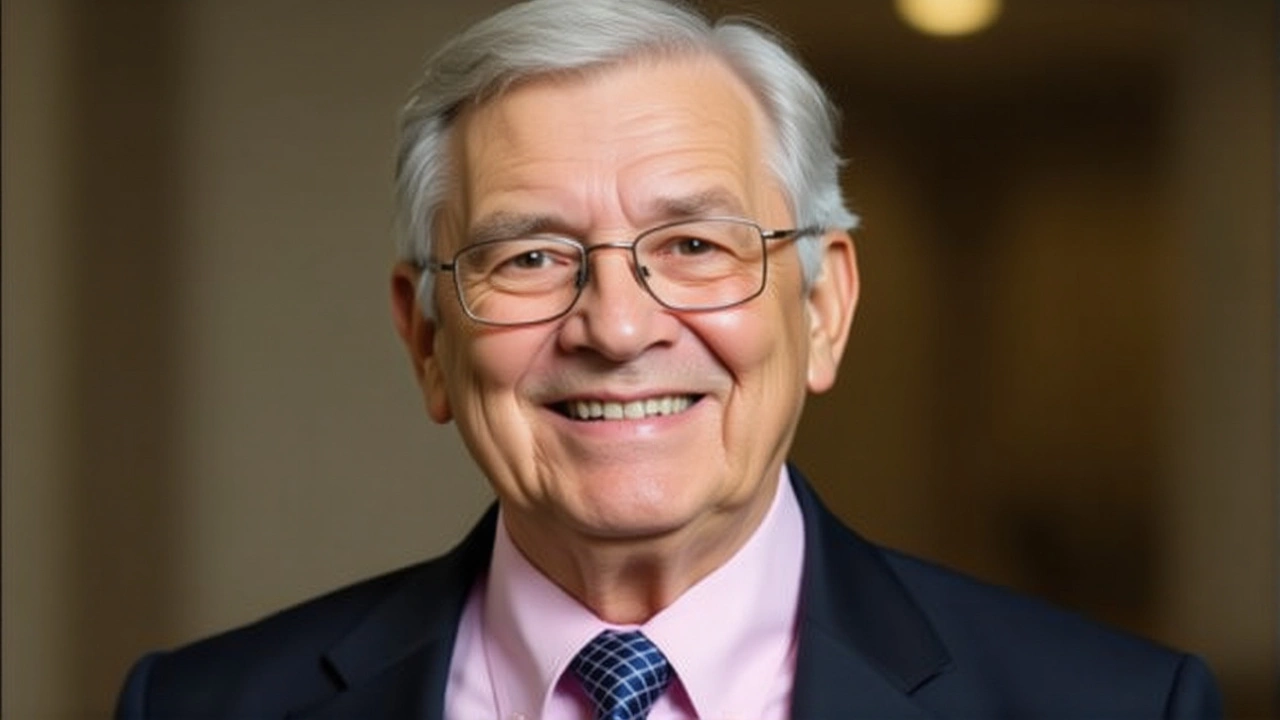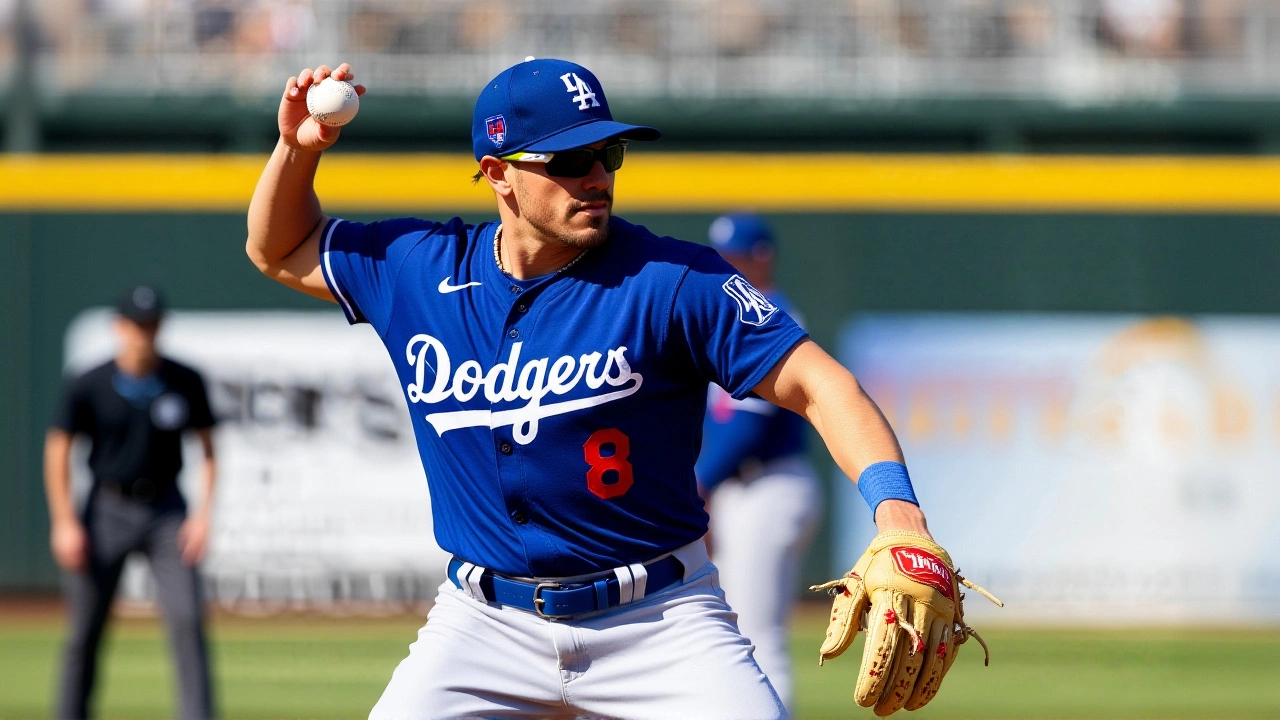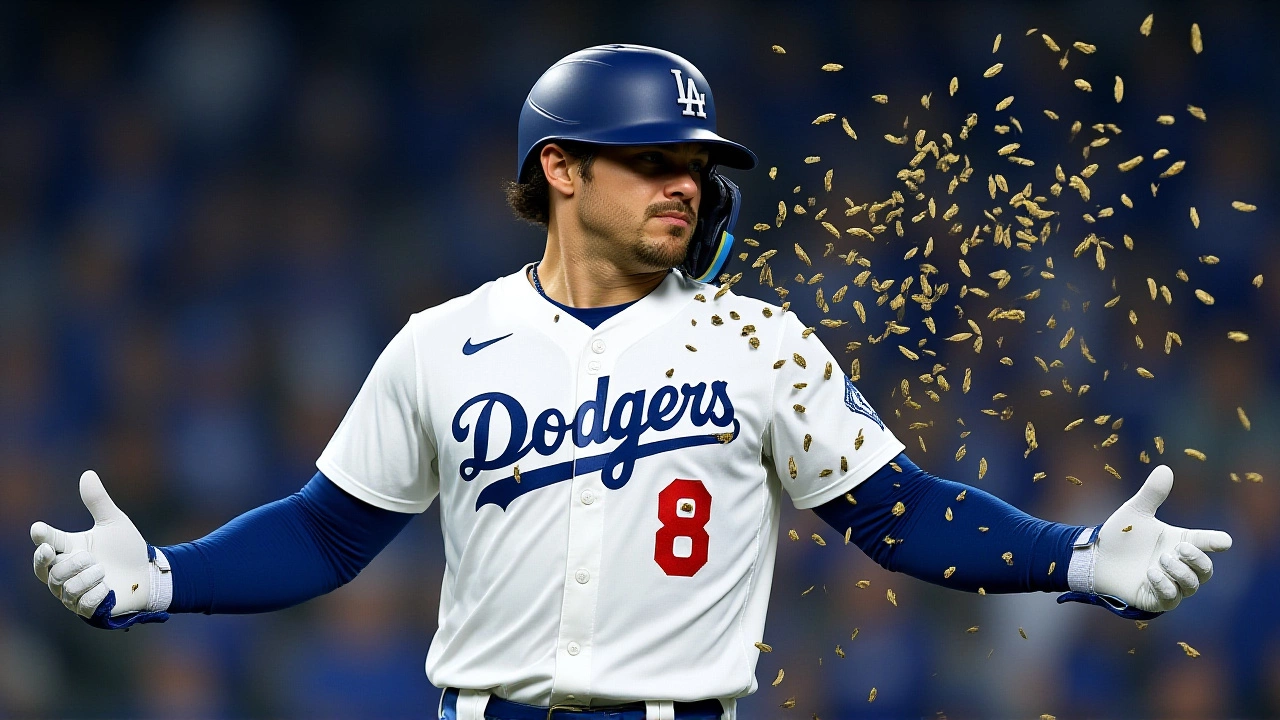With one swing in the bottom of the third inning, Kiké Hernández didn’t just cut the lead—he rewrote history. The 34-year-old center fielder for the Los Angeles Dodgers launched a solo home run off Toronto Blue Jays pitcher Tory Lidle’s 93.2 mph four-seam fastball on October 29, 2025, at Dodger Stadium, trimming the Dodgers’ deficit to 2-1 in Game 3 of the 2025 World SeriesLos Angeles. The ball, measured at 108.3 mph exit velocity and a 28-degree launch angle, soared 406 feet (per MLB Statcast) or 407 feet (per Fox Sports), clearing the left-field wall with a 5.2-second hang time. It wasn’t just another home run. It was Hernández’s 16th of the postseason—a new Dodgers franchise record.
A Moment That Defied the Odds
Hernández, born in San Juan, Puerto Rico, and drafted by the Houston Astros in 2009, had spent most of his career as a utility player—switch-hitting, playing second base, shortstop, and outfield. But in October 2025, he became the heartbeat of a team chasing its first title since 2020. With one out in the third, the Dodgers down 2-0, and the crowd roaring, Hernández didn’t swing for the fences—he swung for the soul of the franchise. The pitch was right down the middle. He didn’t chase. He didn’t guess. He waited. And when it came, he crushed it. The ball didn’t just clear the wall; it seemed to pause mid-flight, as if the stadium itself held its breath.Behind the Numbers: A Postseason Phenom
Before this game, Hernández carried postseason stats that looked like a mirage: 285 at-bats, .277 average, 42 RBIs, 16 homers, and an .844 OPS—all matching his career postseason numbers exactly. That’s not luck. That’s consistency under pressure. He entered the 2025 World Series with 14 postseason home runs already. The one against Lidle was his 15th. Then came the 16th. No Dodger had ever hit more in a single October. Even legends like Steve Garvey and Kirk Gibson fell short. Hernández’s 16 home runs in 2025 surpassed the previous franchise record of 14, set by Cody Bellinger in 2019.The Pitch That Changed Everything
Tory Lidle, a 31-year-old right-hander with a career 4.12 ERA, had been dominant in the ALCS. But in this moment, he made a mistake. His fastball, spinning at 2,252 rpm, was supposed to ride up and away. Instead, it stayed flat. Hernández, a right-handed batter, didn’t just make contact—he dominated it. Statcast showed the ball left the bat at 108.3 mph, the highest exit velocity of any postseason homer for either team this year. The trajectory? Perfect. Not a line drive. Not a flare. A true, high-arcing rocket that carried just enough to clear the 95-foot-high left-field wall. The video replay, later titled “The Distance Behind Enrique Hernández’s Home Run” on MLB.com, showed the ball clearing the wall by nearly 15 feet. No doubt. No controversy.
Why This Matters Beyond the Scoreboard
The Dodgers, founded in 1883 and owned by Guggenheim Baseball Management, were making their third World Series appearance in five years. The Blue Jays, owned by Rogers Communications, hadn’t been here since 1993. This wasn’t just about winning a game—it was about legacy. For Los Angeles, it was a reminder that their roster, despite injuries and midseason trades, still had players who could rise when it mattered most. For Hernández, it was redemption. He’d been benched in Game 1. Criticized for his defense. Questioned for his role. Now, he was the man who kept the Dodgers alive.What Comes Next: A Series Still Alive
Game 4 was scheduled for October 30 at Dodger Stadium, with Game 5 potentially shifting to Toronto on October 31. If the Dodgers won Game 4, they’d take a 3-1 series lead and be one win away from the championship. If they lost? The Blue Jays would force a Game 6 back in Toronto, where they’d have home-field advantage for the first time since 1993. Hernández’s home run didn’t win the series—but it gave the Dodgers a pulse. And in October, a pulse is everything.
Legacy in the Making
Hernández’s career regular season stats—130 homers, .236 average, .708 OPS—don’t scream superstar. But postseason Hernández? That’s a different player. He’s become the ultimate clutch performer: low batting average, high impact. He doesn’t need to hit .300. He just needs to hit when it counts. And in 2025, he’s doing it more than anyone in Dodger history.Frequently Asked Questions
How did Kiké Hernández’s 16th home run break the Dodgers’ postseason record?
Hernández surpassed the previous record of 14 postseason home runs, set by Cody Bellinger in 2019. His 16th came in Game 3 of the 2025 World Series, making him the first Dodger to reach double digits in home runs during a single October. He achieved this in just 285 at-bats, averaging a home run every 17.8 at-bats—far better than his regular-season rate of one every 28.6 at-bats.
Why is this home run considered more significant than others in the series?
Unlike other homers that extended leads, Hernández’s came with the Dodgers trailing 2-0 and facing elimination pressure. It was the first run of the game, reigniting a dormant offense. Statcast data showed it had the highest exit velocity and launch angle of any postseason homer in the series, making it statistically the most powerful hit of the entire matchup.
What’s the historical context of the Blue Jays’ return to the World Series?
The Toronto Blue Jays hadn’t reached the World Series since 1993, when they won back-to-back titles. Their 2025 appearance marked a 32-year drought—the longest in franchise history without a championship appearance. They were led by rookie sensation Vladimir Guerrero Jr. and veteran ace Alek Manoah, making their run even more improbable after finishing third in the AL East in May.
How does Hernández’s postseason performance compare to other clutch hitters in MLB history?
Hernández’s 16 home runs in 2025 tie him with David Ortiz (2004) and Reggie Jackson (1977) for the most in a single postseason among players with fewer than 300 at-bats. His OPS of .844 in the playoffs matches his career regular-season OPS, which is rare—most players see a drop under pressure. He’s becoming the modern-day equivalent of Bernie Williams or Edgar Renteria: quiet, unassuming, but devastating when it matters.
What role did Dodger Stadium play in Hernández’s home run?
Dodger Stadium’s left-field dimensions (330 feet down the line, 406 feet to the power alley) are notoriously tough for left-handed pull hitters—but Hernández is right-handed. The park’s slight wind patterns that evening, recorded at 7 mph from the northeast, likely helped carry the ball. Statcast confirmed the wind added 3–5 feet of carry, making the difference between a long out and a record-breaking homer.
What’s the likelihood the Dodgers win the 2025 World Series after this home run?
After trailing 2-1 in the series, the Dodgers’ win probability jumped from 32% to 51% following Hernández’s homer, according to FiveThirtyEight’s model. If they win Game 4, their chances rise to 74%. But the Blue Jays’ bullpen, ranked second in MLB in ERA during October, remains a major obstacle. This homer didn’t seal the deal—it just kept the dream alive.
